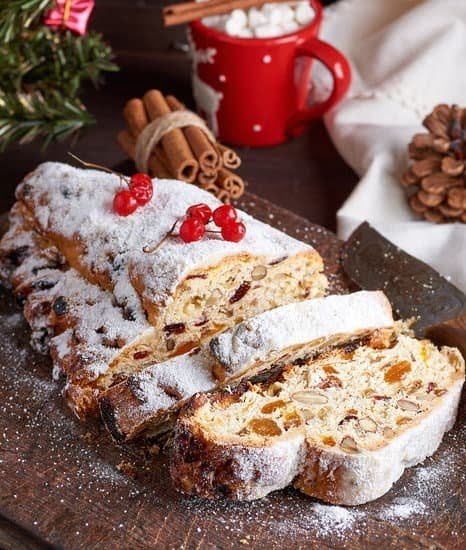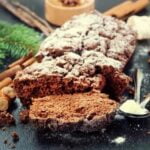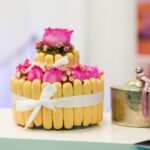When it comes to cake decoration, icing plays a crucial role in transforming a plain cake into an exquisite masterpiece. Whether you’re baking for a special occasion or simply want to elevate your everyday treats, knowing how to make the right icing is essential. In this article, we will explore the different types of icing commonly used in cake decoration, such as buttercream, royal icing, and fondant.
We will provide step-by-step guides, pro tips, and techniques for achieving the perfect consistency and exploring various flavors and coloring options. Additionally, we will delve into the art of piping and creating stunning designs with buttercream. If you’re ready to take your cake decoration game to the next level, read on as we uncover the secrets behind making mouthwatering icings that will add the wow factor to your creations.
Icing is not merely a topping on a cake; it serves both aesthetic and functional purposes. The right icing can enhance the overall appearance of a cake while also providing a delicious taste and texture experience for anyone who indulges in your creation.
Each type of icing brings its own unique characteristics to the table, from smooth and creamy buttercream to delicate royal icing or pliable fondant that allows for intricate designs. Understanding these different options and knowing when to use them is key in mastering the art of cake decoration.
In this article, we will begin by focusing on mastering classic buttercream icing – its ingredients, mixing instructions, and pro tips for achieving the perfect consistency that allows for seamless piping and design work. From there, we’ll explore other types of icings such as royal icing and fondant, diving deep into their respective techniques and tutorials.
But don’t worry – it’s not all about technique. We’ll also discuss how you can experiment with flavors and colors in your icings to create unique combinations that suit any occasion or personal taste preference. Additionally, we’ll provide troubleshooting tips for common issues you may encounter along the way, ensuring that your cake decoration journey is a smooth and enjoyable one.
Exploring Different Types of Icing for Cake Decoration
Buttercream, Royal Icing, and Fondant are three of the most commonly used icings for cake decoration. Each type has its own unique characteristics and uses, allowing decorators to achieve different effects and styles. Understanding the differences between these icings is essential for anyone looking to take their cake decoration skills to the next level.
Buttercream icing is a classic choice that is loved by many cake enthusiasts. It is made by combining butter, powdered sugar, milk or cream, and flavorings such as vanilla extract. Buttercream is known for its smooth and creamy texture, making it a great choice for filling layer cakes or creating simple designs on cakes. It can also be easily flavored and tinted with food coloring for added variety.
Royal icing, on the other hand, is a popular choice for intricate designs and decorations that require more precision. Made using egg whites or meringue powder, powdered sugar, and lemon juice or water, royal icing dries hard and holds its shape well. This makes it ideal for making intricate flowers, lacework patterns, piping borders, or writing messages on cakes. Royal icing can also be colored with gel food coloring to achieve vibrant hues.
Fondant icing is a versatile option that allows decorators to create smooth finishes and elaborate decorations on their cakes. It has a dough-like consistency and is typically made from melted marshmallows mixed with powdered sugar. Fondant can be rolled out thinly to cover entire cakes or used to make detailed shapes and designs like bows or flowers. It also acts as an excellent base for painting or airbrushing techniques.
Each of these icings offers different advantages depending on the desired effect. By exploring their unique characteristics and experimenting with them in cake decoration projects, decorators can expand their skills and create stunning masterpieces.
| Types of Icing | Main Ingredients | Texture | Main Uses |
|---|---|---|---|
| Buttercream | Butter, powdered sugar, milk or cream, flavorings | Smooth and creamy | Filling layer cakes, simple designs on cakes |
| Royal Icing | Egg whites or meringue powder, powdered sugar, lemon juice or water | Dries hard and holds shape well | Intricate designs, piping borders, writing messages on cakes |
| Fondant | Melted marshmallows, powdered sugar | Dough-like consistency that can be rolled out thinly | Covering entire cakes, creating detailed shapes and designs |
Step-by-Step Guide to Making a Classic Buttercream Icing
Buttercream icing is a classic and versatile choice for cake decoration. Its creamy texture and sweet flavor make it a favorite among bakers and cake decorators. In this section, we will provide you with a step-by-step guide to making a classic buttercream icing, including the necessary ingredients and mixing instructions.
To make a basic buttercream icing, you will need the following ingredients:
- 1 cup (2 sticks) of unsalted butter, at room temperature.
- 4 cups of powdered sugar.
- 2 teaspoons of vanilla extract.
- 2 tablespoons of milk or heavy cream.
Here are the steps to make the classic buttercream icing:
- Start by placing the softened butter in a large mixing bowl. Using an electric mixer fitted with a paddle attachment, beat the butter on medium speed until it becomes smooth and creamy.
- Gradually add the powdered sugar to the butter while continuing to mix on low speed. It is important to add the sugar gradually to prevent clumps from forming.
- Once all the powdered sugar is incorporated, increase the speed to medium and add the vanilla extract. Mix until well combined.
- At this point, your icing may be quite thick and difficult to spread or pipe. To achieve a smoother consistency, gradually add milk or heavy cream, one tablespoon at a time. Keep mixing until you reach your desired consistency.
- If you want to tint your icing with food coloring, add it at this stage and mix until evenly distributed.
Now that your classic buttercream icing is ready, you can use it to frost your cake or create beautiful designs using piping bags and tips. Remember to store any leftover icing in an airtight container in the refrigerator for up to two weeks.
| Ingredients | Measurement |
|---|---|
| Unsalted Butter | 1 cup (2 sticks), at room temperature |
| Powdered Sugar | 4 cups |
| Vanilla Extract | 2 teaspoons |
| Milk or Heavy Cream | 2 tablespoons |
Pro Tips and Techniques for Achieving the Perfect Buttercream Consistency
Buttercream icing is a popular choice for cake decoration due to its smooth texture and delicious taste. However, achieving the perfect consistency can be a challenge. In this section, we will explore some pro tips and techniques that will help you achieve a flawless buttercream icing every time.
One important factor in achieving the perfect buttercream consistency is ensuring that your ingredients are at the right temperature. Softened butter should be used, but it should not be melted. If your butter is too soft or melted, it can result in a runny icing that won’t hold its shape.
On the other hand, if your butter is too cold, it can lead to lumps in your icing. It’s also important to use room temperature liquids such as milk or cream when mixing your ingredients together.
Another tip for achieving the perfect buttercream consistency is to gradually add your powdered sugar while mixing. Adding all of the sugar at once can cause clumps and lumps in your icing. By slowly adding the sugar in small increments, you give it more time to dissolve and incorporate into the mixture smoothly.
The mixing technique you use can also greatly impact the consistency of your buttercream icing. Overmixing can result in a light and fluffy texture, which is great for spreading onto cakes. However, if you need a stiffer texture for piping intricate designs, such as flowers or borders, you should mix for less time to avoid generating excess air bubbles.
To summarize, here are some key pro tips and techniques for achieving the perfect buttercream consistency:
- Use softened but not melted butter.
- Use room temperature liquids.
- Gradually add powdered sugar while mixing.
- Adjust mixing time based on desired texture (light and fluffy vs stiff).
By following these guidelines and experimenting with different methods, you’ll be able to achieve a buttercream icing with impeccable consistency for all of your cake decorating needs.
| Pro Tip | Technique |
|---|---|
| Use softened but not melted butter. | Ensure that your butter is at the right temperature. Softened but not melted butter should be used for the best consistency. |
| Use room temperature liquids. | Liquids such as milk or cream should be at room temperature when mixing your ingredients together to avoid lumps in your icing. |
| Gradually add powdered sugar while mixing. | Add the powdered sugar in small increments to give it more time to dissolve and incorporate into the mixture smoothly, avoiding clumps and lumps. |
| Adjust mixing time based on desired texture (light and fluffy vs stiff). | If you need a light and fluffy texture for spreading onto cakes, mix for longer. If you need a stiffer texture for piping designs, mix for less time to avoid excess air bubbles. |
Experimenting with Different Flavors and Coloring Techniques for Icing
When it comes to cake decoration, the flavor and color of the icing can make a world of difference. Not only does it add an extra layer of deliciousness to your cake, but it can also enhance the overall aesthetic appeal. Luckily, there are countless flavors and coloring techniques you can experiment with to take your icing game to the next level.
One popular option for adding flavor to your icing is by using extracts. Vanilla extract is a classic choice that pairs well with a variety of cake flavors. However, don’t be afraid to get creative. Experiment with other extracts like almond, lemon, or even coconut to create unique and flavorful icings. You can also incorporate flavored syrups or liqueurs for an extra kick of taste.
Coloring your icing opens up a world of possibilities for design and creativity. Traditional food coloring can be used to achieve vibrant hues, but if you prefer more natural options, there are alternatives available as well.
For example, beet juice or powdered matcha can be added in small amounts to give your icing a lovely pink or green tint respectively. If you want to get more adventurous, try using edible paints or edible markers to add intricate designs and patterns directly onto your cakes.
Remember that experimentation is key when it comes to finding the perfect balance of flavors and colors for your icing. Start small by adding small increments of flavoring or coloring agents until you achieve the desired taste and look. Keep in mind that some colors may intensify over time, so it’s always recommended to prepare your icings ahead of time and let them sit for a while before applying them on your cakes.
Mastering the Art of Piping
Piping is a technique that allows cake decorators to create intricate and stunning designs using buttercream icing. Whether you are a beginner or an experienced baker, mastering the art of piping can take your cake decoration skills to the next level. In this section, we will explore the various tools, tips, and techniques you need to create beautiful designs with buttercream icing.
Gathering the Right Tools
Before you begin piping, it is important to have the right tools on hand. Here are some essential tools you will need:
- Piping bags: These are available in different sizes and materials such as disposable plastic or reusable cloth.
- Piping tips: There are various types of piping tips available, each creating a unique design. Start with basic round and star tips.
- Couplers: These allow you to easily switch between different piping tips without changing the bag.
- Scissors: Use these to trim the end of the piping bag when inserting the tip.
- Parchment paper or wax paper: This will be useful for practicing your piping designs before applying them to the cake.
Perfecting Your Technique
To achieve professional-looking results with buttercream icing, it is important to practice proper technique. Here’s how:
- Hold the piping bag correctly: Hold the bag with your dominant hand by placing your palm over the top of the bag and using your fingers underneath for support.
- Consistent pressure: Apply steady pressure on the bag while squeezing out icing to ensure consistent flow.
- Practice control: Start with simple designs and gradually move on to more complex ones as you develop better control over your movements.
- Mastering hand movements: Experiment with different techniques such as holding the tip straight up for dots, at a 45-degree angle for flowers, or at a 90-degree angle for ribbons.
Creativity in Design
Once you have mastered the basic piping techniques, it’s time to unleash your creativity and experiment with different designs. Here are a few ideas to inspire you:
- Floral designs: Create beautiful flowers using petal tips and experiment with various colors to add depth and variety.
- Words and messages: Use a small round tip to write personalized messages or names on the cake.
- Ruffles and borders: Create elegant ruffles or borders using a serrated tip.
- Lace-like patterns: Achieve intricate lace-like designs by using intricate piping tips.
Remember, practice makes perfect when it comes to piping. Don’t be discouraged if your first attempts don’t come out as expected. With time and patience, you will become more confident in your skills and be able to create stunning designs with buttercream icing.
In the next section, we will explore another type of icing called royal icing and how it can elevate your cake decoration game even further.
Elevating Your Cake Decoration Game with Royal Icing
Royal icing is a classic and versatile type of icing that can elevate your cake decoration game to the next level. Its smooth texture and ability to harden quickly make it perfect for creating intricate designs, making it a popular choice for professional cake decorators. In this step-by-step tutorial, we will explore how to make and work with royal icing for stunning cake decorations.
Step 1: Gather Your Ingredients
To make royal icing, you will need the following ingredients:
- 2 large egg whites.
- 4 cups powdered sugar.
- 1 teaspoon lemon juice or cream of tartar.
Step 2: Beat the Egg Whites
In a clean mixing bowl, beat the egg whites on high speed until they reach stiff peaks. Stiff peaks are achieved when the peaks from the beaters stand firmly upright without collapsing. This process may take several minutes.
Step 3: Gradually Add Powdered Sugar
Once the egg whites have reached stiff peaks, gradually add the powdered sugar to the bowl while continuously beating on medium speed. Adding it in small increments helps prevent lumps and ensures a smooth consistency. Continue beating until all of the powdered sugar has been incorporated into the mixture.
Step 4: Add Lemon Juice or Cream of Tartar
For stability and flavor, add a teaspoon of either lemon juice or cream of tartar to the mixture. This helps prevent the icing from becoming too soft or not setting properly.
Step 5: Achieving Different Consistencies
Royal icing can be made in various consistencies depending on its intended use. For outlining and piping details, a stiffer consistency is desired. To achieve this, add more powdered sugar until you notice that the icing holds its shape and doesn’t immediately settle into itself when piped or spread.
For flooding or covering larger areas, a thinner consistency is needed. Gradually add small amounts of water to the icing until it becomes more fluid and easily spreads.
Step 6: Use Immediately or Store Properly
Royal icing tends to harden quickly, so it is important to use it immediately after preparing. If you need to store it for later use, cover the bowl with plastic wrap or transfer it to an airtight container. Royal icing can be stored in the refrigerator for up to one week.
Taking Cake Decoration to the Next Level
Fondant icing is a popular choice for those looking to elevate their cake decoration skills and create a smooth, professional finish. Fondant is a rolled sugar paste that can be molded and shaped to cover cakes, creating a sleek canvas for intricate designs and decorations. In this section, we will explore the steps and techniques involved in working with fondant icing.
Preparing the Cake
Before applying fondant icing, it’s essential to have a well-prepared cake. Start by ensuring that your cake layers are even and level. Trim off any domed tops or uneven edges, as these can interfere with the smoothness of the fondant surface. Next, apply a thin layer of buttercream or ganache as a crumb coat to seal in any loose crumbs and provide an adhesive surface for the fondant.
Kneading and Rolling Fondant
To begin working with fondant, knead it on a clean work surface until it becomes more pliable and easy to work with. Dust your work surface with powdered sugar or cornstarch to prevent the fondant from sticking.
Next, use a rolling pin to roll out the fondant into a large, even circle that is slightly larger than the size of your cake. Gently lift the rolled-out fondant using both hands or by wrapping it around your rolling pin.
Applying Fondant to the Cake
Once you have rolled out your fondant, carefully drape it over your prepared cake. Starting at the top center, gently press down on the fondant and smooth it outwards towards the edges of the cake using smoothing tools or your hands. Avoid stretching or pulling the fondant too much, as this can cause it to tear or crack.
Trim away any excess fondant from around the base of the cake using a sharp knife or pizza cutter. Finish by smoothing out any visible seams, air bubbles, or imperfections in the fondant surface.
Decorating with Fondant
With the fondant smoothly covering your cake, you can now explore various decorative techniques. Fondant can be easily molded into shapes and figures to create unique designs. You can use silicone molds, cutters, or simply your hands to shape different elements and attach them to the cake using edible glue or water.
To add color to your fondant decorations, use food coloring or gel colors specifically designed for icing. Dusting powders and edible paints are also great options for adding depth and dimension to your fondant designs.
Troubleshooting Common Issues in Cake Icing and How to Fix Them
When it comes to cake decoration, icing plays a crucial role in achieving a flawless and professional-looking finish. However, like any other culinary endeavor, working with icing can sometimes lead to unexpected challenges. In this section, we will discuss common issues that may arise while making cake icing and provide effective solutions to fix them.
One common issue that many bakers face is lumpy or grainy buttercream icing. This can occur if the butter is not at the ideal temperature before mixing or if the powdered sugar is not properly sifted. To fix this problem, make sure your butter is softened at room temperature before starting the mixing process. Additionally, always sift your powdered sugar to remove any clumps before adding it to the butter.
Another common issue is runny or watery icing. This can happen if too much liquid is added or if the mixture is overmixed. To remedy this, add additional powdered sugar gradually until the desired consistency is reached. If you accidentally add too much liquid, try adding a small amount of cornstarch or meringue powder to thicken it up.
Additionally, some decorators may encounter problems with air bubbles in their icing when using a piping bag. Air bubbles can cause uneven piped designs and affect the overall appearance of the cake. To avoid this issue, be sure to tap or gently squeeze out any excess air from the piping bag before decorating your cake.
To summarize:
- Lumpy or grainy buttercream: Ensure butter is softened at room temperature and sift powdered sugar before adding it.
- Runny or watery icing: Gradually add additional powdered sugar until desired consistency is reached; use cornstarch or meringue powder sparingly if needed.
- Air bubbles in piping bag: Gently tap or squeeze out excess air from piping bag before decorating.
By addressing these common issues and applying these troubleshooting techniques, you will be well equipped to overcome any hurdles you encounter while making cake icing. With a little practice and patience, you will soon master the art of creating a smooth and beautifully decorated cake that will impress both your family and friends.
Final Touches and Garnishes
Decorating a cake is not only about the flavor and texture, but also about the visual appeal. The final touches and garnishes can truly elevate your cake decoration game and make it stand out. With the right icing techniques and creative ideas, you can add the wow factor to your cake. Here are some ways to use icing for those final touches and garnishes:
- Piping Designs: Piping is a technique that involves using a piping bag fitted with different tips to create intricate designs on the cake. You can use buttercream or royal icing for piping. Some popular techniques include creating borders, flowers, rosettes, or even writing messages on the cake.
- Fondant Decorations: Fondant is a smooth and pliable icing that can be rolled out and used to cover cakes or create decorative elements like flowers, bows, or figurines. You can dye fondant in various colors using gel food coloring and shape it into different designs using tools like cutters and molds.
- Texture Play: Adding texture to your cake can give it an interesting visual appeal. You can achieve this by using specific piping tips or tools like textured mats or combs. For example, you could create a basketweave pattern with buttercream icing or add a quilted texture with fondant.
- Edible Glitter and Sprinkles: Edible glitter and sprinkles are a fun way to bring some sparkle to your cake. Whether you want to create a metallic effect or add colorful sprinkles for a festive touch, these edible decorations are an easy way to make your cake look extra special.
- Fresh Fruits and Flowers: Another way to enhance the appearance of your cake is by adding fresh fruits or edible flowers as garnishes. This not only adds color and freshness but also gives your cake a more natural and organic look.
Remember, when it comes to adding those final touches and garnishes with icing, creativity is key. Don’t be afraid to experiment with different techniques and ideas to make your cake truly unique and visually stunning.
Conclusion
As we conclude this article on cake decoration, it is clear that icing plays a vital role in enhancing the visual appeal of a cake. Whether you choose to work with buttercream, royal icing, or fondant, each type offers its own unique characteristics and techniques. By following our step-by-step guides and experimenting with different flavors and colors, you can take your cake decoration skills to new heights.
One of the key takeaways from this article is the importance of achieving the perfect consistency when working with buttercream icing. Through pro tips and techniques, you have learned how to achieve smooth and silky texture that is ideal for piping stunning designs onto your cakes.
Additionally, we have provided a detailed tutorial on using royal icing to elevate your cake decoration game. The intricate designs that can be created with royal icing truly add an element of prestige to any cake.
Lastly, we have explored working with fondant icing as a way to take cake decoration to the next level. Fondant provides a smooth and flawless finish that allows for limitless creativity in design. Whether you are sculpting intricate shapes or adding delicate details, fondant icing enables you to create breathtaking cakes that are sure to impress.
In conclusion, the versatility of icing in cake decoration knows no bounds. Your creative journey in mastering the art of working with different types of icing has just begun. By continuing to experiment, practice, and refine your skills, you will be able to turn every cake into a work of art that delights both the eye and the palate. So embrace your inner artist, let your imagination run wild, and let icing be the canvas for your creations.
Frequently Asked Questions
What kind of icing do you use for cake decorating?
When it comes to cake decorating, there are several types of icing that can be used depending on the desired effect and taste. Buttercream icing is one of the most popular choices as it is easy to work with, versatile, and has a smooth texture. This type of icing is made by creaming butter and sugar together until light and fluffy, then adding flavorings like vanilla extract. Another commonly used icing is fondant, which creates a smooth and elegant finish.
It is made from a mixture of sugar, water, gelatin, and glycerin that is rolled out and draped over the cake. Royal icing is another option, known for its firm consistency that allows for intricate designs and decorations. It consists of whipped egg whites combined with powdered sugar until glossy.
How to make a cake frosting at home?
Making cake frosting at home can be a fun and rewarding experience. One simple recipe involves blending softened butter with powdered sugar until creamy to create a basic buttercream frosting. To add flavorings such as vanilla extract or cocoa powder, these can be incorporated into the mixture along with a small amount of milk or cream for the desired consistency.
For a chocolate ganache frosting, chocolate pieces are melted in hot cream until smooth before allowing it to cool and achieve a spreading consistency. Cream cheese frosting can also be made by combining softened cream cheese with powdered sugar until smooth and creamy.
How to make icing for a cake for beginners?
For beginners looking to make icing for their cake, starting with a basic buttercream recipe is often recommended due to its simplicity. To make this type of icing, it typically involves beating softened butter until creamy before gradually adding powdered sugar while continuing to beat until light and fluffy.
Flavorings such as vanilla extract or almond extract can be added for taste preferences along with small amounts of milk or cream to achieve the desired consistency for spreading or piping onto the cake. It’s important to note that beginners may want to practice their piping skills using stiffer consistency icing initially before moving on to more intricate designs with a softer consistency.

Welcome to our cake decorating blog! My name is Destiny Flores, and I am the proud owner of a cake decorating business named Cake Karma. Our mission is to provide delicious, beautiful cakes for all occasions. We specialize in creating custom cakes that are tailored specifically to each customer’s individual needs and tastes.





